More Than Skin–Creating Total Facade Designs
Louvers in Glazed Walls
Louvers are often integrated into glazed aluminum curtainwall systems and storefronts. Understanding the performance characteristics used in glazed applications should include three steps. First is knowledge of the performance criteria required for airflow and water protection in a specific building. The recognized testing and standards organization in this case is the Air Movement and Control Association (AMCA) International. For glazed-in curtainwall applications, storm class louvers are generally recommended that are tested per AMCA 500-L wind-driven rain standards and designed to minimize water infiltration. Second, evaluating local building codes and how the codes may affect model selection and integration is clearly important. The International Mechanical Code requires AMCA 550 compliance for all intake and exhaust louvers in the Hurricane-Prone Region as defined by the International Building Code. Third is knowledge of the specific curtain wall product that the louver is being installed into. Pressure plate and cover cap systems use a continuous screw applied pressure plate to hold the glass in place. These are most often referred to as “Curtain Wall Systems” or "Pressure Wall.” Alternatively, flush glazed systems (often called “Storefront”) do not have a removable exterior pressure plate and are characterized by fixed deep and shallow glass pockets located near the center of the system depth. By working with the correct glazing system details, louvers can be properly designed and installed.
Sun Control
Many facades incorporate exterior mounted systems to provide sun control at glazed openings. Such sun controls minimize solar heat gain, can help control energy costs, ensure occupants’ comfort, and contribute to sustainable design projects. Cantilevered, horizontal, vertical, and inclined sun controls can filter up to 80 percent of the sun’s heat and glare, cut wintertime radiant heat loss, and integrate natural light into new and retrofit building projects.
Since there are many options and variations of how sun control systems can be configured and perform, manufacturers offer design assistance services. They typically welcome collaboration with architects, engineers, and contractors to ensure their products perform as specified to meet the performance requirements of the application.
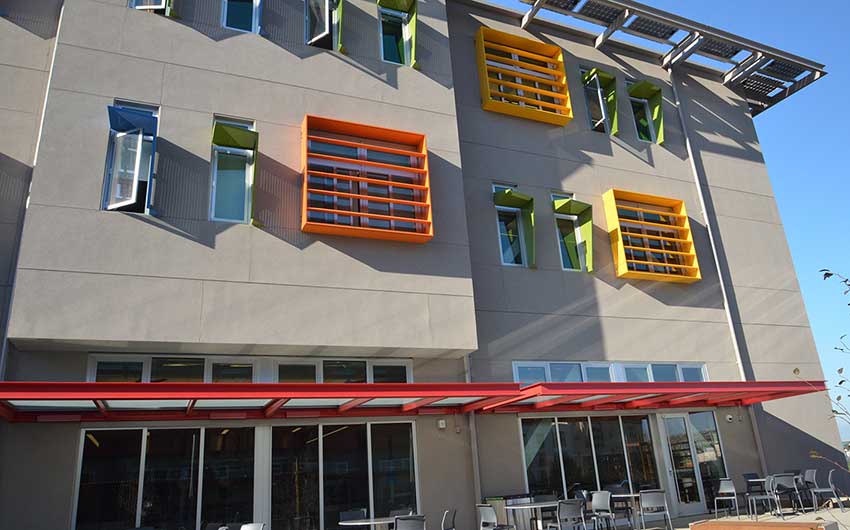
Photo courtesy of Airolite
Sun control features on facades can provide visual interest as well as enhance the energy performance of a building.
Building Expansion Joints
The facades on larger buildings typically require intentional expansion joints (gaps) in the structure to allow for the movement of different parts of the building. That movement can be due to thermal expansion and contraction, seismic loads, or other conditions. However, a gap like this creates a problem for the continuity of the thermal, moisture, and air barriers in a facade. Therefore, specifying and installing the most appropriate type of expansion joint filler is important to be sure it functions properly without compromising any of these barriers. In particular, there is a need to keep bulk water (from weather) and airborne moisture from seeping into or penetrating through the joints and into the facade and/or building. If the wall carries a fire rating, then the expansion joint may need to also carry the same fire rating to be code compliant.
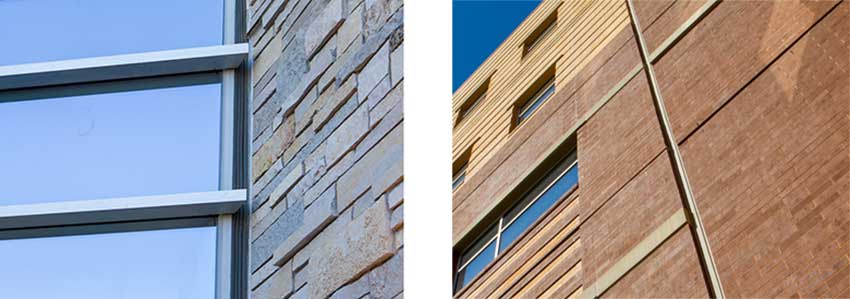
Photo courtesy of Inpro
Expansion joints are often needed in building facades but they can be readily incorporated to blend with adjacent materials.
The appearance of expansion joints may also be a design consideration. In some cases, the fillers can be selected with textures and colors that blend into the appearance of the facade design or create noticeable and intentional lines on the facade. Alternatively, some expansion joint systems are designed to be used with a cover that is made from metal or other durable material that can be integrated into an overall facade design. Some covers allow for the insertion of materials that match the cladding, so the expansion joint completely blends into the facade or other surfaces.
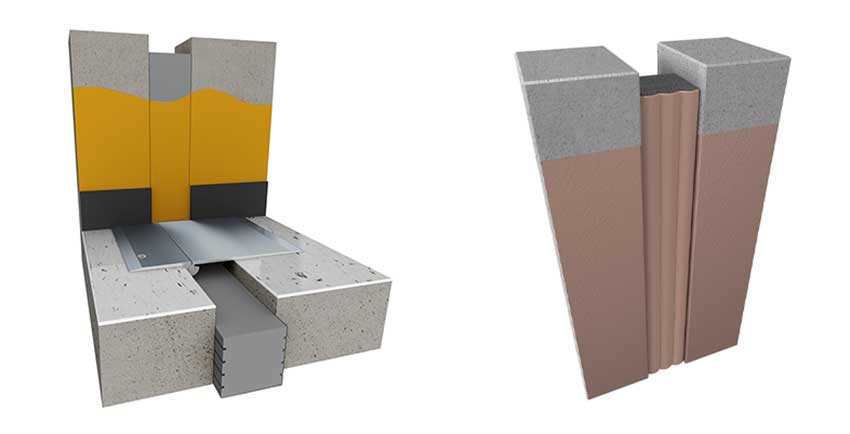
Photo courtesy of Inpro
There are different types of expansion joint systems but in building envelopes, they all need to be resistant to water penetration and maintain other properties as well.
The key to creating successful expansion joints is fundamentally based on understanding the attributes of the different materials or types of system that are available. Effective choices include the use of manufactured foam seals, infilled “pan” systems, and metal cover systems. We will look at some of the choices below and comment on their suitability for different facade applications.
Open Cell and Closed Cell Foams
Open cell foams are available that allow for flow-through of water and vapor. In many exterior veneer systems, if moisture becomes trapped in a wall cavity, building systems allow the moisture to wick out. This is a good quality and a major focus to eliminate potential mold issues in vertical applications.
Closed cell foams, on the other hand, are absolutely watertight and do not allow the moisture to enter the body of the foam. This is the best application for horizontal runs where water could pool or vertical surfaces subject to extreme weather. These are tougher to compress but they expand quite well.
Laminated Foam Layers
Closed cell foams, on the other hand, are absolutely watertight and do not allow the moisture to enter the body of the foam. This is the best application for horizontal runs where water could pool or vertical surfaces subject to extreme weather. These are tougher to compress but they expand quite well.
Layered foam seals are produced using sections of foam that are laminated together. While this is a cheaper manufacturing process, it can result in a product with reduced lifespan due to the vulnerability of delamination of the various layers from each other and its susceptibility to splitting from shear movement. Architects should look closely at the seal’s construction and ask questions of the manufacturer as to the seal’s make-up.
Given batch-to-batch variations in manufacturing, the multiple layers of foam can have different qualities and can expand/compress at differing rates. They may not equalize resulting in inconsistent expansion and “bloating.”
Monolithic Pour Foam Seals
While in a compressed state, all foams look the same, specifications calling for foam seals made with “monolithic manufacturing methods” will avoid product failures and claims down the road.
These seals are produced in a single pour of the foam material to create a monolithic seal. That means there are no layers to delaminate. Batch-to-batch variations inherent in layered foam seals are also avoided by using monolithic pour foam seals.
A good rule of thumb and good practice for foam seals in general is to limit their application with a joint width of no more than 8 inches (200 mm) or smaller. Use of foams for expansion joints larger than 8 inches leads to two things. First, it will exceed the foam’s performance characteristics, and the weight of “super-wide” foam seals can lead to sagging in vertical applications. Second, there are exponentially higher costs in these larger foam seals compared to other expansion joint cover solutions.
Compression Seals
As their name implies, compression seal joint systems are installed into a blocked out joint area and absorb movement through compression and expansion of the pleats in the seal. The rubber-looking, corrugated joint material is also an excellent option for exterior applications where waterproofing is required. Proper use of two-part epoxies ensures solid adhesion, and heat-welded seams ensure watertight performance. The nominal joint width for these systems should not exceed 3 1/2 – 4 3/8 inches (89-111 mm) since the material can’t really handle wider applications than that. Since these are often left exposed, building facade aesthetics can be enhanced using colored compression seals.
Vapor and Thermal Control
Regardless of the type of expansion joint filler system that is used, facades need to retain control of vapor and thermal transfer. For vapor or moisture control, one solution that can be used is to employ a reinforced vapor barrier (RVB) to prevent water infiltration or to channel water to drain locations via an integrated drain tube. Most designers consider the RVB as the go-to-standard for exterior wall expansion joint since they are a durable membrane that resides within the joint. They accommodate movement, but also prevent the penetration of air, debris, and pests from entering through the joint. The critical factor in installation of an RVB expansion joint system is to apply a bed of manufacturer-approved butyl sealant in the concrete block-out area or along the frame along the entire length of the expansion joint. This will aid in securing the moisture barrier to the concrete block-out and provide a watertight seal to prevent seepage around the perimeter of the joint. In order to work properly, always leave enough drape in the moisture barrier to ensure the system will be able to fully open to its maximum distance without interference from the expansion cover components.
Thermal performance in expansion joints is often overlooked in building design, but is no less important than air and moisture performance. There is some minor insulating benefit from RVB joint systems, but an Insulated Vapor Barrier (IVB) system should be considered wherever thermal performance is important. The addition of insulation within the dual-walled vapor barrier provides a higher R Value─and the benefit, of course, is that the R Value works in both directions. Heat or cold don’t penetrate the joint, and interior occupant comfort and HVAC performance are better shielded from the outside conditions along the entire length of the joint. IVBs are also capable of providing up to 50 percent movement, making them a seismic capable system. They are suitable for use in expansion gap sizes ranging from 6 to 28 inches.
Notice
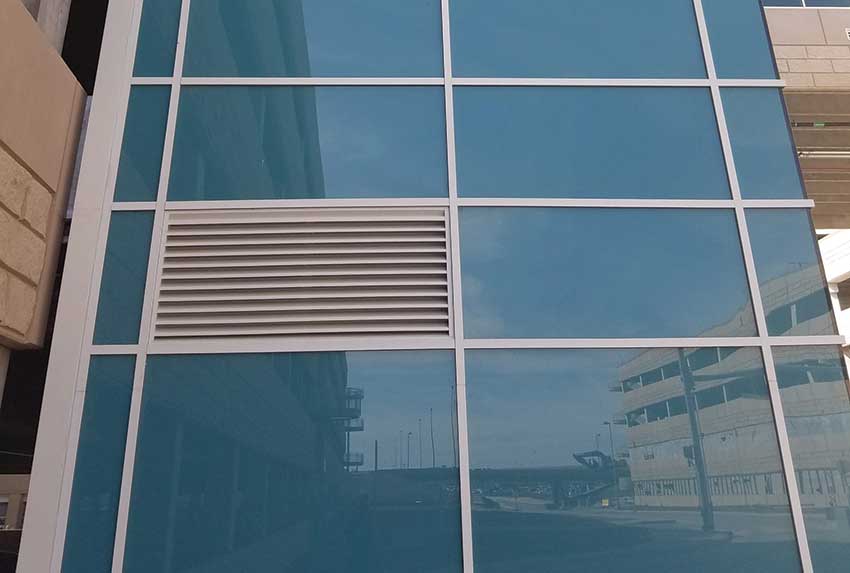
www.airolite.com
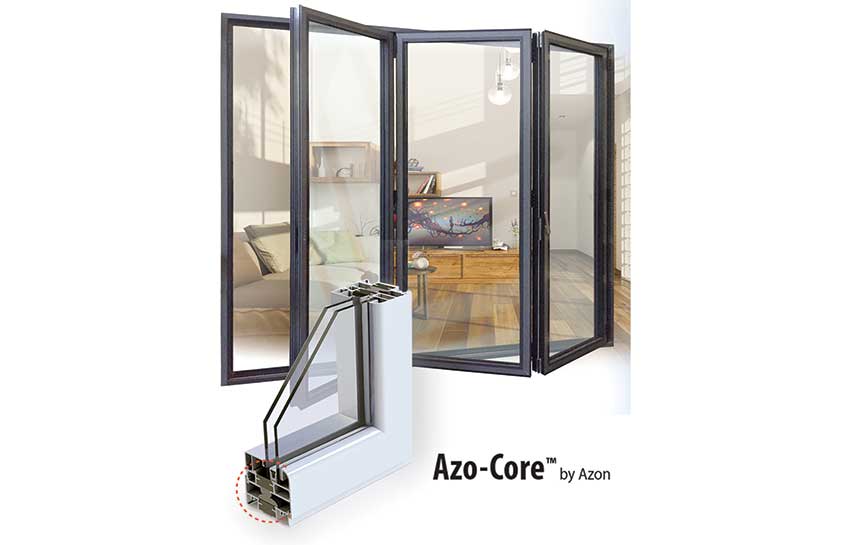
www.azonintl.com
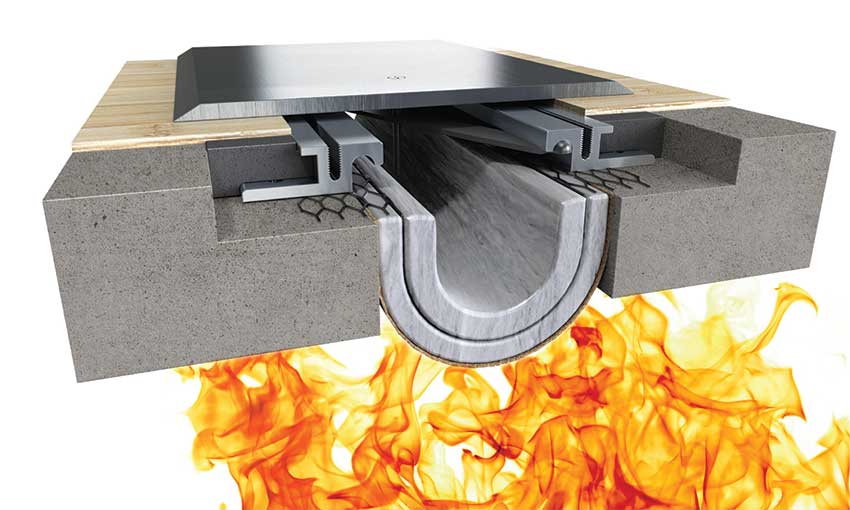
www.inpro.com

www.neolith.com
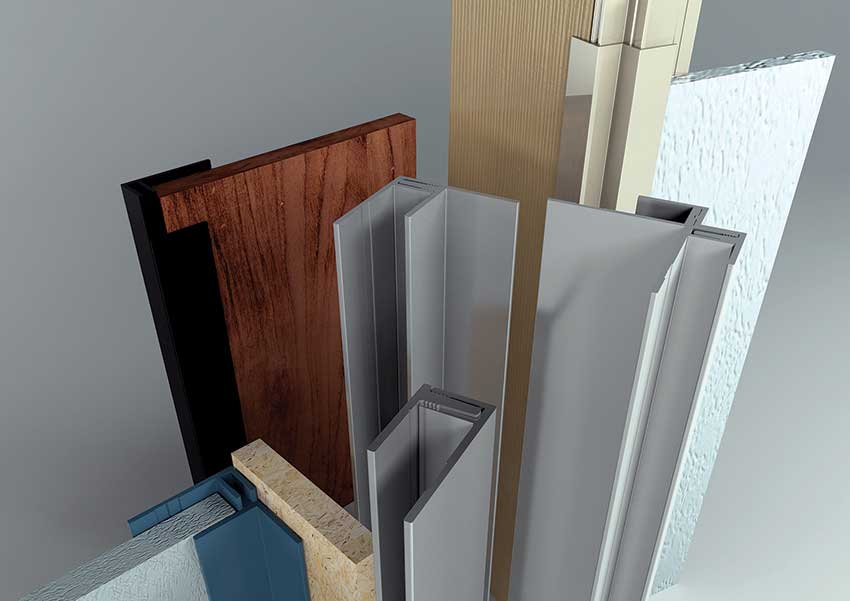
www.tamlyn.com

www.vacumaxvig.com









